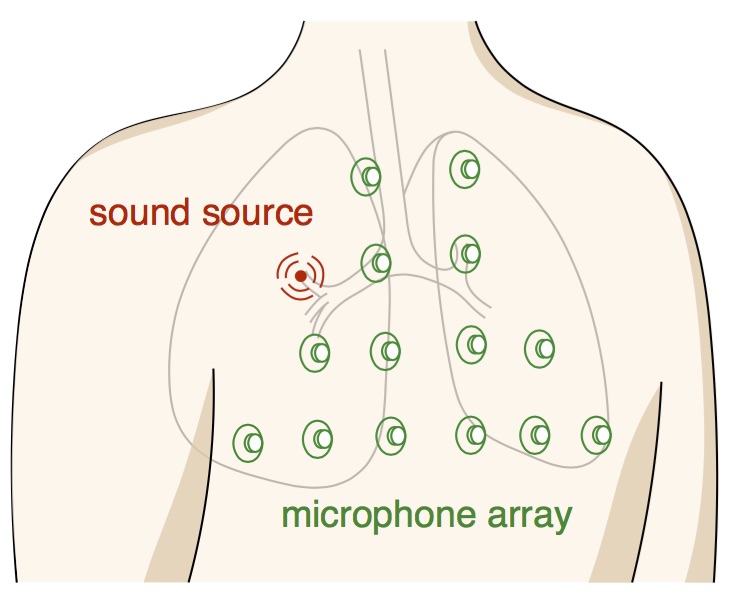Using lung sounds for diagnosis
When using a stethoscope, wheezing is one of the most commonly heard lung sounds
Recording of a wheeze
Recording of normal breathing
Wheezing is associated with conditions such as asthma, chronic obstructive pulmonary disease, bronchitis, pneumonia, emphysema and interstitial fibrosis. Since this list of conditions is rather long, it is difficult to be sure of what is wrong with a patient just based on hearing the wheeze. Therefore we are working on understanding how wheezing sounds are produced so that diagnoses can be more specific.
The airways of the lung make a branching tree of flexible tubes [Tompsett, D. H. (1952). A New Method for the Preparation of
Bronchopulmonary Casts. Thorax, 7(1), 78–88]

When air flows through a flexible tube, the tube can oscillate, as seen in this video slowed down 500 times,
These oscillations are responsible for wheezing sounds, and by investigating them we have obtained a relationship between the frequency of oscillation, the material properties, and the tube geometry. This can then be used to make diagnoses more specific.
We have captured high speed video of the onset of oscillations for a variety of different tube geometries,
From these it is clear that the tube is opening and closing, and there are waves bouncing up and down longitudinally. Instability is caused by an interaction between these two different modes. Knowledge of this mechanism allows us to predict the fluid pressure at the onset of oscillations, and the frequency of the oscillations.
It is also useful to know where in the lung the wheeze is coming from. This is difficult because sound can propagate from the lung to the chest wall in multiple ways,

For this reason, we are developing the ability to localise the sound source by placing a known sound source inside the lung, and recording sounds at the lung using a specially designed acoustic array



